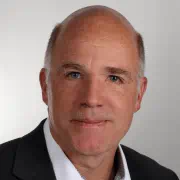In the property sector, few asset classes have shown such dynamic growth in recent years as the high-tech sectors of semiconductor production and data processing. Our current International Construction Costs Report 2024 diagnoses correspondingly large added value effects in this segment through efficiency in design, planning and execution. However, the importance of professional strategies for public participation and stakeholder management has so far been underestimated.
Let's be honest - every one of us acts according to the “Saint Florian” principle from time to time, also known as NIMBY ("Not in my backyard") in today's interconnected world. Take the Internet, for example: who doesn't want a super-fast gigabit connection for a seamless home office and smooth UHD streaming of their favorite series? But hand on heart - who wants to have the hyperscaler data center required for this performance next door to their home?
Role model energy transition: Adapting participation concepts
If you follow the media coverage of local conflicts over planned data centers, it becomes clear that there is still room for improvement in terms of modern strategies for stakeholder management and public participation. The past approach, while not malicious, has somewhat lacked sophistication. Like any emerging market facing rapid expansion, an initial, more "agile" phase will evolve into refined, strategically driven models, particularly stakeholder and participation management.
Incidentally, data center developers and operators do not have to start from scratch to develop strategies. In recent years, new concepts for communication and participation management have been developed for major energy transition projects. Those affected are involved at an early stage, enabling them to participate and thus significantly reducing the risk of paralyzing fundamental opposition. The industry would be well advised to utilize the best practices in this area and adapt the platforms and tools for its own purposes.
A simple principle applies here: the more credible the developers – and operators – of data centers can prove to be – in terms of going the extra mile for sustainable energy and water management, sealing levels and architectural integration into the environment – the greater the acceptance by the public and decision-makers. And the earlier they proactively establish constructive communication with those affected and other key stakeholders, the greater the chances of success for the project.
David against Goliath? Identifying and anticipating pain points …
If you look at the typical topics of discussion in site conflicts at local level, it quickly becomes clear that in order to advance expansion programs, technological progress, alongside a deep understanding of both ecological AND social sustainability must go hand-in-hand with the optimization of participation processes. A few highlights from the field shed light on these connections and interactions:
• Despite continuous technological optimization, data centers are still major energy consumers. This automatically puts them in competition with local commercial and industrial companies, whose growth and development plans are affected by the limitations of the local energy supply. These conflicts must be addressed at an early stage.
• Local political decision-makers operate in a field of tension when discussing data center projects. Tempting proceeds from the sale of land and business tax revenues must be balanced against the actual long-term stimulus that can be expected for the local labor market. The deeper the understanding of these local political dimensions, the better.
• There is nothing to gloss over in the original sense of the word: In the past, data centers were too often designed in unadorned, monolithic functional architecture. The more architectural creativity is invested in terms of individual integration on site, the better the basis for a constructive public discussion about the project. Technical and design innovation and quality are not mutually exclusive.
• Sealing rates provide plenty of material for public discussion. The high space requirements of data centers put their developers under pressure to justify their actions. They are rightly judged on their efforts to use valuable green and arable land as sparingly and carefully as possible. If the impression arises that the requirements are being lowered for particularly financially strong players, a legitimization problem arises for good reason.
• Public decision-makers have also recognized the market dynamics and the pressure to invest. They are becoming more professional with regard to the expansion of data center infrastructure and are beginning to develop their own handouts and guidelines for approval processes at local authority and district level. They are also attempting to integrate the special dimensions, requirements and effects of data centers into the established urban land use planning processes with their own participation procedures that have been developed over many years.
Data center developers and operators are well advised to follow these developments closely.
• Time and again, it is niche topics that are communicated poorly and too late, such as the emergency power supply with diesel generators with their chimneys (relevant with regard to BimSchG, BimSchV, TA Lärm) or the necessary security systems against unauthorized access, that can create tipping points in the public debate. In case of doubt, proactive transparency and openness is always the better approach than late, communicative attempts at repair.
• Data center developers act as financially strong, economic big players on the local real estate markets. Their activities can have a significant impact on the development of property prices - with corresponding effects on the local commercial structure that leave more than just winners in the field. Sensitivity to the potential impact on the local economic structure is required here.
The "perfect" data center project
Ultimately, the various dimensions of the mega topic of sustainability are reflected in all the points outlined above. Let's turn the perspective around to clarify: What would the "perfect" data center project look like, in whose conception phase citizen participation and stakeholder management would almost be a given?
It would take the form of a data campus with a contemporary architectural design, as a conversion project on the site of a former coal-fired power station. It would be directly connected to local wind and solar energy parks and would have minimal impact on the local water balance thanks to intelligent cooling management. It would have a storage-based emergency power supply. It would also be connected to local combined heat and power and district heating networks, benefiting local households and businesses. With the additional business tax revenue, the municipality could initiate new projects to improve the quality of life. And perhaps the most important point: the entire concept would be presented for public discussion as early and boldly as possible so that suggestions, criticism and ideas from those affected could be taken on board and integrated.
While it may not be possible to achieve all these ideals universally, developers can bolster their stance in public discussions by authentically showcasing their sustainable goals.
The communication task:
Data centers as sustainable building blocks of basic services
Today, data center infrastructure - like energy and water - is part of the basic supply. The developers and operators of the facilities have been working flat out for years to improve the sustainability balance of the asset class and to catch up with the leaders in the climate protection competition. There is nothing to stop them from tackling the challenges of public participation, stakeholder and communication management for potential data center locations with the same vigor. The interdisciplinary expertise and practical experience from other infrastructure sectors are available for this.
If it is done right, it will not only benefit the image of the industry and its sustainability balance enormously. In future, many a "Florian" may proudly refer to the data center in their neighborhood …










